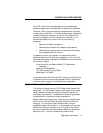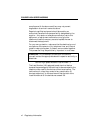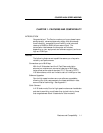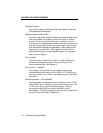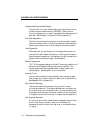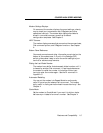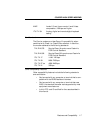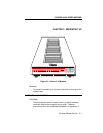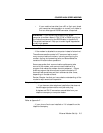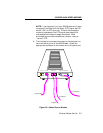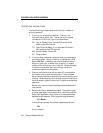
COURIER HIGH SPEED MODEMS
1-6 Features and Compatibility
COMPATIBILITY
The Courier adheres to the following modulation schemes and
standards, ensuring compatibility with a wide base of installed
modems. Unless otherwise indicated, Dual Standard V.34
modems conform to the listed standards.
NOTE: The International Telecommunication Union (ITU-T)
was formerly the International Telegraph and Telephone
Consultative Committee (CCITT).
ITU-T V.34 28.8K/26.4K/24K/21.6K/19.2K/16.8K/14.4K/12K/
9600/7200/4800/2400 bps
V.FC 28.8K/26.4K/24K/21.6K/19.2K/16.8K/14.4K bps
V.32 terbo 21.6K/19.2K/16.8K/14.4K/12K/9600/
7200/4800 bps
HST 16.8K/14.4K/12K/9600/7200/4800 bps (Dual
Standard modems in HST mode with ASL up
to 21.6K bps)
HST Cellular Cellular connections at 12K/9600/7200/
4800/2400/1200/300 bps (Dual Standard
modems in HST mode)
ITU-T V.32 bis 14.4K/12K/9600/7200/4800 bps
ITU-T V.32 9600/4800 bps
ITU-T V.22 bis 2400 bps
Bell 212A 1200 bps (also V.22)
ITU-T V.23 1200 bps with 75 bps back channel (some U.K.
and European phone systems)
ITU-T V.25 Answer sequence for calls originating outside
the U.S. and Canada
ITU-T V.25 bis For synchronous communications using
HDLC and character-oriented protocols
Bell 103 300 bps (ITU-T V.21 optional)
ITU-T V.42 LAPM error control, 1200 bps and higher
ITU-T V.42 bis Data compression, 1200 bps and higher




